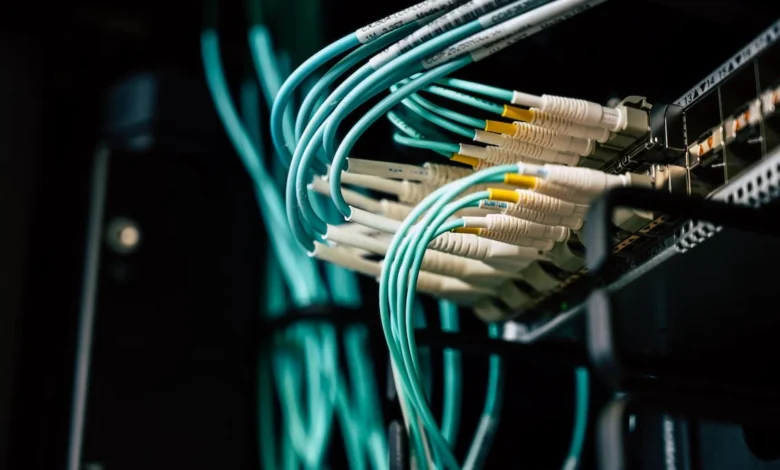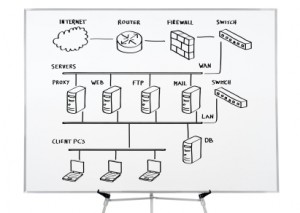Network Traffic: Maneuvering through Digital Thoroughfares5

Network Traffic the transmission of data within a network, also referred to as network traffic, plays an essential role in contemporary computing amidst the constantly connected digital domain. This piece extensively delves into the complexities concerning various kinds of network traffic management while highlighting how it positively affects overall efficiency and functionality within digital ecosystems.
Unscrambling Network Communication
The movement of data packets between devices in a computer network is known as network traffic. This involves various activities such as communication, information exchange, and transfer of data. Adequate comprehension about the intricacies related to it becomes pivotal for enhancing performance efficiency, upholding security standards and achieving user satisfaction across digital platforms.
Network Traffic Categories
Several types of network traffic can be classified based on their distinctive purposes in a network ecosystem.User-generated data, including files, emails and multimedia content is transmitted through data traffic.Voice Traffic is related to instantaneous communication transmitted through the network, commonly linked to calls made via Voice over Internet Protocol (VoIP).
Video Traffic requires high bandwidth to ensure smooth playback, as it involves streaming or downloading video content.The function of Traffic Control is to oversee network protocol and guarantee efficient communication between devices while adhering to pre-established regulations.Management traffic pertains to network management activities, which encompass tasks such as monitoring, configuration and maintenance.Familiarity with the structure of these forms of traffic is crucial in order to execute effective network management tactics.

The Advantages of Effective Management of Network Traffic
Managing network traffic effectively enhances the performance, security and user experience in a networked setting.Optimal utilization of network resources through effective management prevents congestion and latency, resulting in enhanced performance. The net effect is quicker data transfer and better response times that promote a smooth digital experience.By implementing robust security measures, positive network traffic management can ensure improved security. Potential security threats and anomalies within the network’s traffic patterns can be detected through monitoring and analysis. Encrypted protocols, intrusion detection systems, and firewalls are among the tools that networks use to maintain a secure posture.
Efficient utilization of available bandwidth can be realized by prioritizing critical traffic types. This is achieved through positive traffic management which ensures that network performance remains uncompromised even when dealing with applications with high demands for bandwidth, such as video conferencing and large file transfers.
A positive user experience is a direct result of effective network management. An uninterrupted connection, minimal interruptions and speedy data transmission are essential elements that enhance users’ digital interaction, making it smooth and enjoyable.
Techniques and Tools for Analyzing Network Traffic
To effectively manage network traffic in a positive manner, different methods and tools are employed by organizations to analyze the flow of data.Packet sniffers capture and analyze data packets as they travel through the network, thereby offering valuable information on traffic types and volume.The analysis of data flow between devices is instrumental in identifying patterns, detecting anomalies and streamlining traffic to enhance overall performance.
Deep Packet Inspection (DPI) enables a comprehensive evaluation of traffic categories and possible security threats by examining the content of data packets.
Real-time network monitoring solutions offer comprehensive visibility into all activities on the network, allowing for proactive management and creating a productive environment.
Positive Strategies for Network Traffic Management
The art of traffic shaping involves actively managing network flow in order to optimize bandwidth usage and regulate data transmission.The prioritization of specific types of network traffic through Quality of Service (QoS) guarantees that critical applications are allocated adequate resources to ensure positive performance.Allocating specific limits of bandwidth to various types of traffic helps maintain a balance in the overall network by preventing any one type from dominating resources.
The implementation of Policy-Based Routing provides the ability to exercise precise control over data flow within a network, in accordance with predetermined regulations and directives.
CDNs, or Content Delivery Networks, help improve the delivery of web content and media by distributing it across multiple servers to reduce latency.
Improving Network Traffic Management through Positive Sentiments
Efficient resource utilization, secure environments and smooth user experience are the key factors that foster a positive sentiment in network traffic management. Networks which prioritize these strategies create an atmosphere of productivity, trustworthiness and reliability.
In Conclusion
To successfully navigate the digital highway, one must possess a profound comprehension of network traffic and implement effective management tactics. By conducting efficient traffic analysis, utilizing proactive shaping methods, and prioritizing user experience enhancement measures, computer networks can maintain their overall efficiency and health. Given that interconnected systems are increasingly critical to organizations nowadays; adopting constructive network traffic management isn’t merely a technical requirement but an essential strategic advantage for accomplishing optimal performance levels while satisfying end-users in today’s digitized era.




